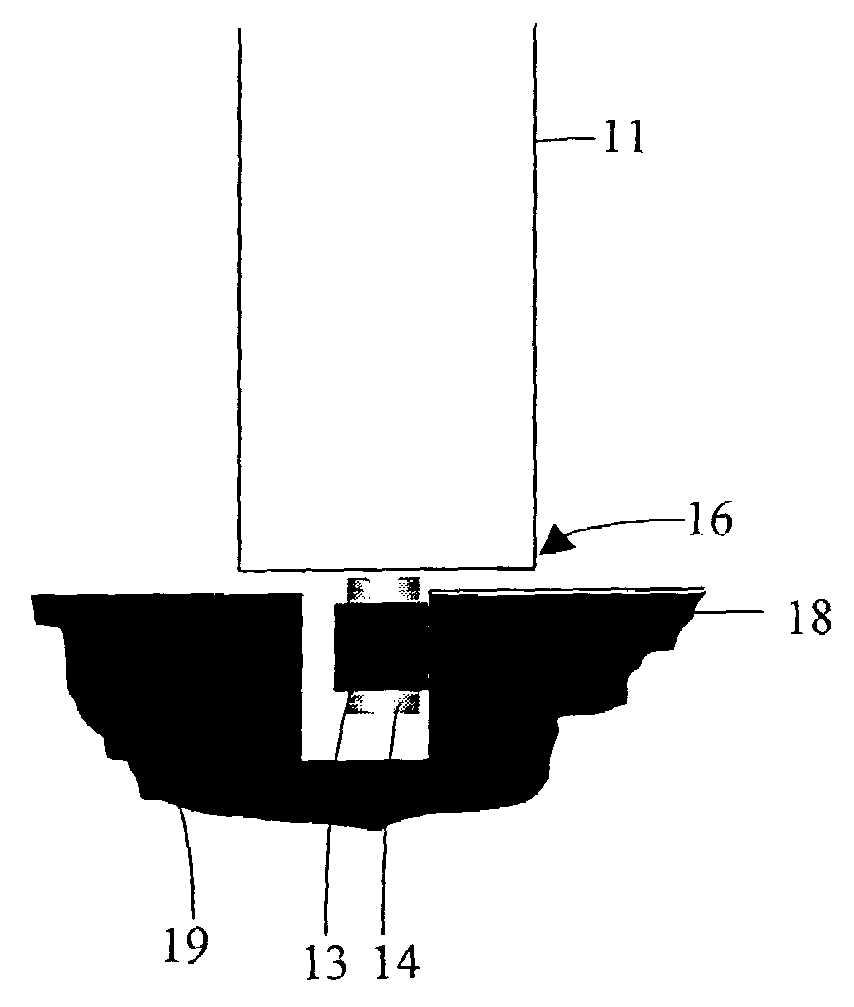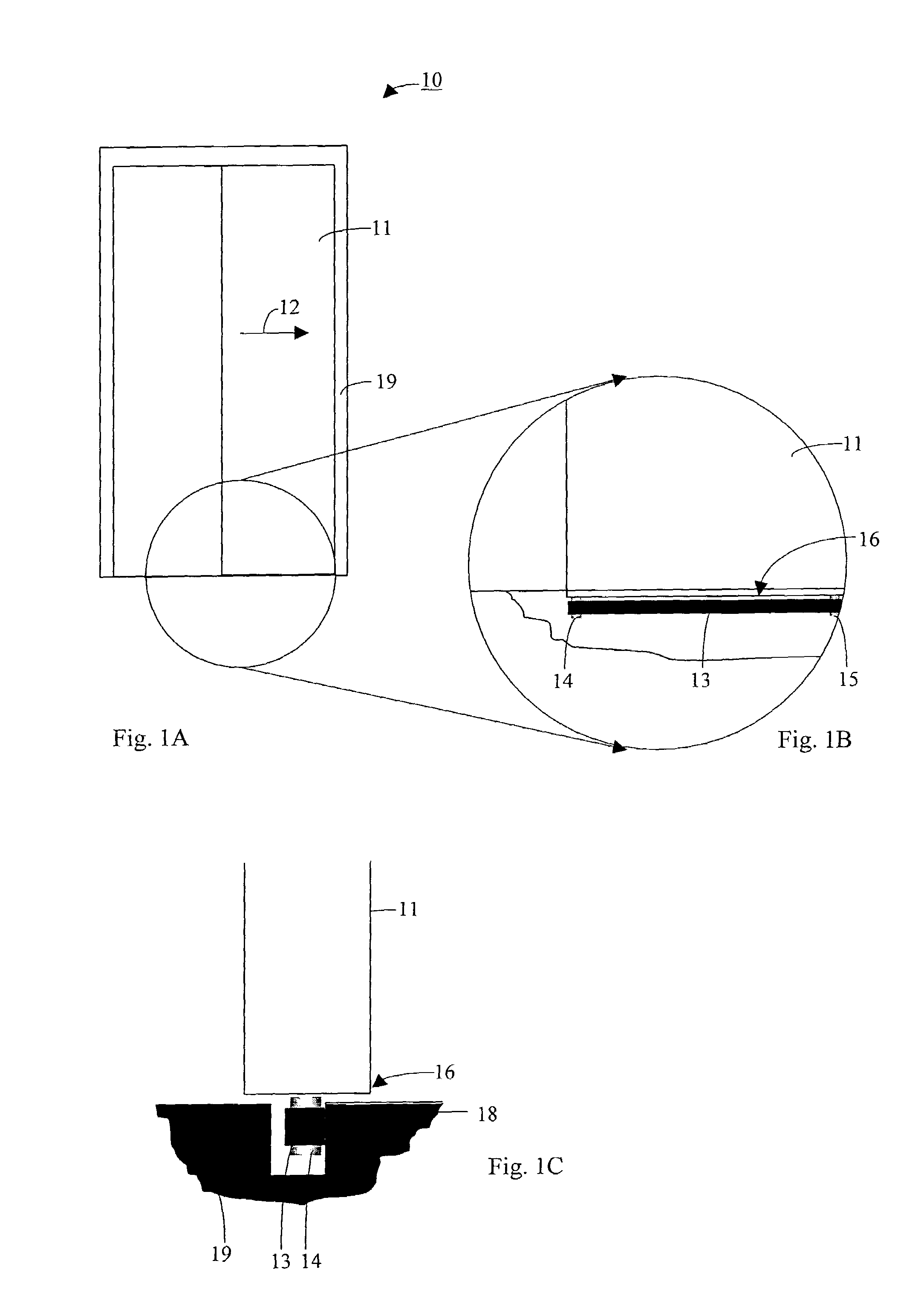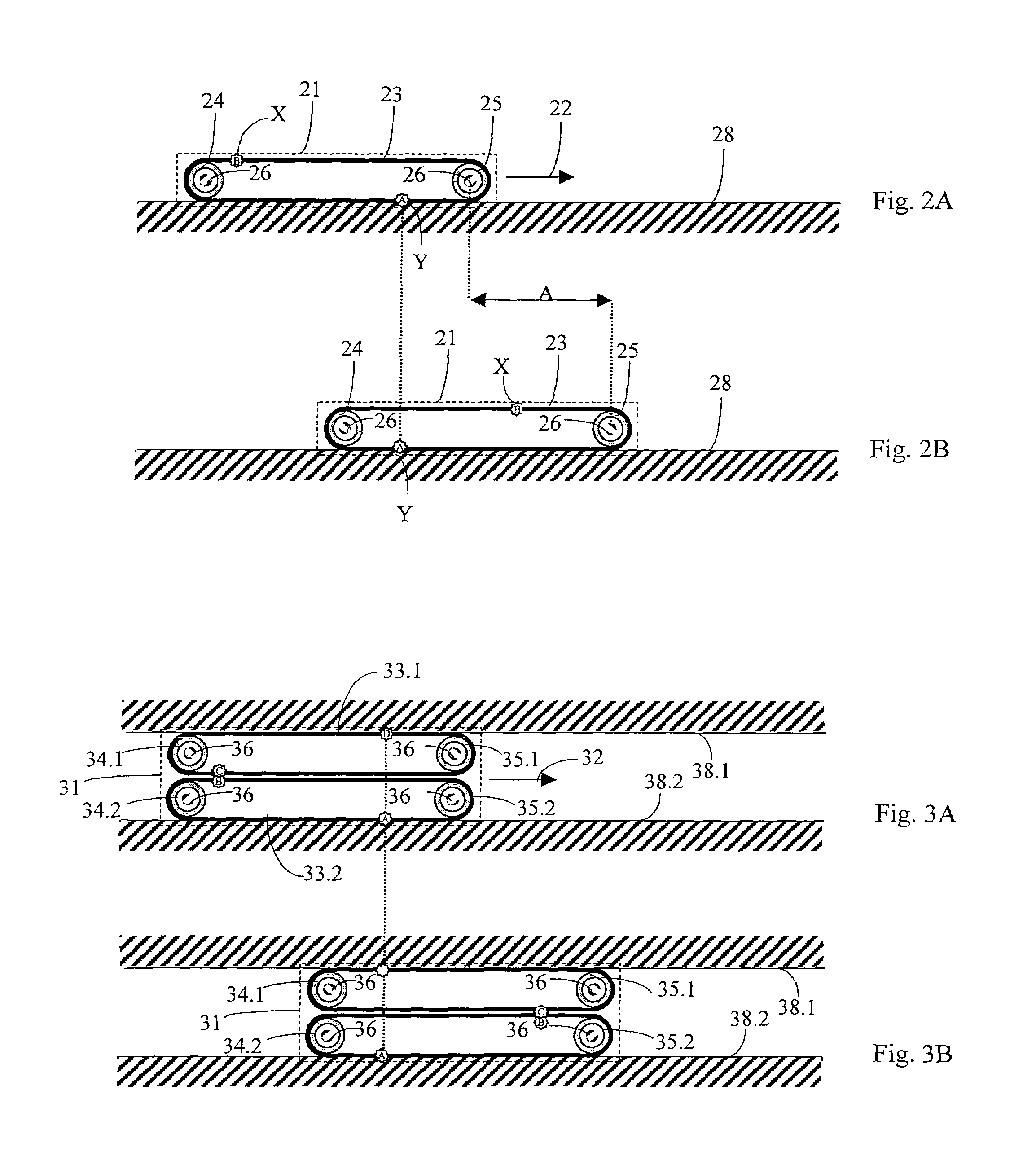Door with sliding door leaf and with guide means
- Summary
- Abstract
- Description
- Claims
- Application Information
AI Technical Summary
Benefits of technology
Problems solved by technology
Method used
Image
Examples
first embodiment
[0038]the present invention is described in conjunction with FIGS. 1A to 1C. A door 10, which forms a shaft door of an elevator (not shown), is shown. The door 10 comprises at least one frame 19 and a door leaf 11 that is slidable in a direction 12 of sliding relative to the frame 19. Arranged at the frame 19 is a vertical guide surface 18 (see FIG. 1C) at which the door leaf 11 is to be guided. The door 10 comprises guide means that are arranged in the region of a lower edge 16 of the door leaf 11. The guide means comprise a (resilient) belt 13 and guide elements 14 and 15, which are arranged at the door leaf 11 and around which the belt 13 runs.
[0039]The belt 13 is so aligned by the guide elements 14, 15 that it extends by its belt length parallel to the direction 12 of sliding of the door leaf 11. A surface of the belt 13 bears flatly against the guide surface 18 when the door 11 is open, closed and sliding. In addition, the door leaf 11 can have a suspension (not shown) in the u...
third embodiment
[0045]FIG. 4 shows a detail of a door according to the present invention. A door leaf 41 has a groove going out from its lower edge. Fastened in the region of this groove by way of roller bearings 45 is a guide element 44 in the form of a deflecting roller, which is rotatable about a vertical axis (not illustrated). The guide element 44 substantially consists of a belt guide portion 44.1, a lower end plate 44.2 and an upper portion 44.3 in the region of the roller bearings 45. A belt 43, the belt width of which extends in vertical direction, runs around the belt guide portion 44.1 of the guide element 44. The belt guide portion 44.1 forms, between the larger diameter end plate 44.2 and the larger diameter upper portion 44.3, a groove-like depression at the surface of the guide element 44. This depression forms a guide structure for the belt, which ensures lateral guidance of the belt 43 during running of the belt 43 around the guide element 44.
fourth embodiment
[0046]FIGS. 5A and 5B show the door according to the present invention, with a door leaf 61. FIG. 5A shows the door leaf 61 in a first position, and FIG. 5B in a second position in which the door leaf 61 is displaced opposite to the first position over a path A. The guide means comprise an open belt 63 and two guide elements 64, 65 at the door leaf 61. The first guide element 64 is a longitudinal guide for a first belt end 63.1, which extends in the sliding direction of the door leaf 61. The second guide element 65 is a deflecting element or a deflecting roller. The belt 63 is fastened by its second belt end 63.2 at or in the region of the frame (not illustrated).
[0047]Spring elements (not shown) can be used which ensure a pressing pressure of the belt in the direction of the guide surface and / or produce a bias of the belt.
[0048]Other forms of guide elements can be used instead of deflecting rollers that rotate about an axis. Particularly suitable, for example, are “Nylon” guide ele...
PUM
 Login to View More
Login to View More Abstract
Description
Claims
Application Information
 Login to View More
Login to View More - R&D
- Intellectual Property
- Life Sciences
- Materials
- Tech Scout
- Unparalleled Data Quality
- Higher Quality Content
- 60% Fewer Hallucinations
Browse by: Latest US Patents, China's latest patents, Technical Efficacy Thesaurus, Application Domain, Technology Topic, Popular Technical Reports.
© 2025 PatSnap. All rights reserved.Legal|Privacy policy|Modern Slavery Act Transparency Statement|Sitemap|About US| Contact US: help@patsnap.com



